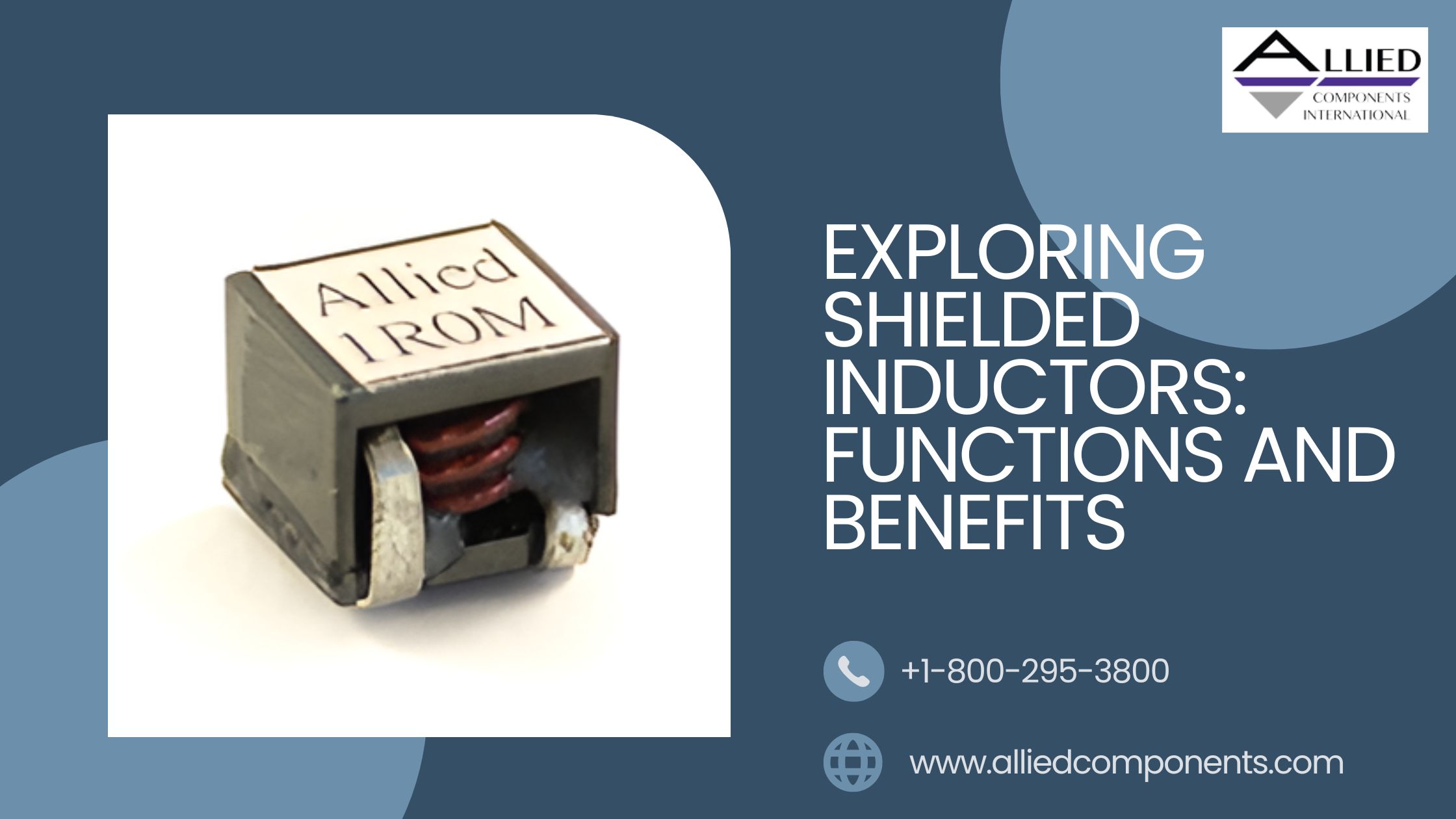Exploring Shielded Inductors: Functions and Benefits

Inductors play a crucial role in electronic circuits, serving as fundamental components in various applications. Shielded inductors, among the different inductors, have gained significant importance in modern electronics due to their unique design and functionality.
Read on to explore shielded inductors, their working, and their importance in today's high-tech devices.
What Is a Shielded Inductor?
A shielded inductor, or a shielded surface mount inductor, features a shielding component that contains the magnetic field generated by the inductor. This containment is crucial for preventing electromagnetic interference (EMI) with surrounding components and enhancing circuit performance. By reducing or eliminating EMI, the shielding acts as a barrier to ensure the magnetic field does not interfere with neighboring components.
To further understand the role of shielded inductors, let's visualize how the shielding component works to contain the magnetic field and prevent EMI.
Visual Representation: Consider a primary inductor as a coil of wire that generates a magnetic field when current passes through it. Now, imagine this coil enclosed within a shield that prevents the magnetic field from escaping. This visual representation helps you understand how the shielded inductor functions to avoid EMI.
How Shielded Inductors Work?
Shielded surface mount inductors are designed to optimize electronic performance by effectively containing magnetic fields and preventing unwanted interference.
- Basic Operation of an Inductor and How Shielding Affects It
An inductor features a coil of wire around a magnetic core. Current through the coil generates a magnetic field, which the core enhances for increased efficiency. Shielding contains this magnetic field, reducing interference with other components.
- Description of the Magnetic Field Generated by the Inductor
The current flowing through the inductor’s coil creates a magnetic field around the core. This field stores energy and resists changes in current. The magnetic field can extend beyond the inductor without shielding, potentially interfering with nearby electronic components.
- Role of the Shield in Containing the Magnetic Field and Preventing Interference
The shield encloses the inductor, confining the magnetic field and preventing it from spreading. Made from materials like ferrite, copper, or aluminum, the shield minimizes electromagnetic interference (EMI) and protects surrounding circuits, improving signal integrity.
Benefits of Shielded Inductors
Shielded power inductors offer several key advantages that make them essential in modern electronic designs:
- Reduction of Electromagnetic Interference (EMI): By containing the magnetic field, shielded inductors significantly reduce EMI, maintaining signal integrity and preventing disruptions in circuit operation. This is especially important in applications requiring signal clarity and precision, such as communication devices.
- Improved Performance in High-frequency Applications: Shielded inductors excel in high-frequency circuits, which are more prone to interference. The containment of the magnetic field ensures optimal performance without affecting or being affected by other components.
- Enhanced Stability and Reliability: Shielding materials enhance the inductor’s stability and reliability by preventing external magnetic fields from interfering with its operation, providing consistent performance in sensitive electronic circuits.
Construction and Materials of Shielded Inductors
Shielded inductors are constructed using various materials and techniques, each contributing to their effectiveness.
Common Materials
- Ferrite Cores: Ferrite is a magnetic material used in many shielded inductors. It helps enhance the magnetic field and provides effective shielding.
- Magnetic Shields: These shields are often made from materials like soft iron or other ferromagnetic substances, which help contain the magnetic field and reduce EMI.
Manufacturing Techniques
Constructing shielded inductors involves winding the coil around the core material and then applying the shielding. The design must carefully balance the core material, shield material, and physical dimensions to ensure optimal performance.
Differences Between Shielded and Unshielded Inductors
The primary difference lies in the presence of the shield. While unshielded inductors may offer simplicity and cost-effectiveness, they lack the EMI protection shielded inductors provide. This makes shielded inductors more suitable for applications where EMI is a concern.
Applications of Shielded Inductors
Shielded inductors find widespread applications across various electronic domains:
- Power Supplies: Used to filter out unwanted noise and improve power quality.
- Audio Equipment: Employed to reduce buzz and interference in amplifiers and preamps.
- RF and Microwave Circuits: Essential for maintaining signal integrity in high-frequency applications.
- Automotive Electronics: Used to mitigate EMI in harsh environments and protect sensitive electronic systems.
- Medical Equipment: Employed in devices that require high levels of electromagnetic compatibility.
- Industrial Control Systems: Used to ensure reliable operation in noisy industrial environments.
Choosing the Right Shielded Inductor
When selecting a shielded inductor, consider the following factors:
- Inductance Value: Ensure the inductor's inductance value matches the requirements of your circuit.
- Current Rating: The inductor must handle the current without overheating or failing.
- Size: The physical size of the inductor should fit within the constraints of your circuit design.
Choose an inductor with specifications that closely match your circuit's needs. This may involve consulting datasheets and understanding the operational conditions under which the inductor will be used.
Enhancing Inductor Performance with Shielding
Shielded inductors reduce electromagnetic interference (EMI) and ensure optimal circuit performance. By effectively containing magnetic fields, they enhance signal integrity and reliability, making them essential in modern electronic applications where stability and efficiency are critical.
Optimize Your Circuit Performance with Allied Components International
Allied Component International stands out as a top manufacturer when selecting shielded inductors. Our expertise in creating shielded inductors ensures reliable and effective design components, providing high-quality solutions tailored to multiple electronic needs.
Contact us today to reduce EMI and boost reliability in your circuits!


